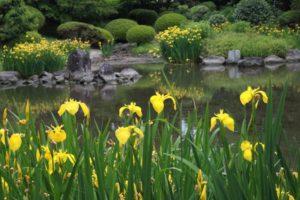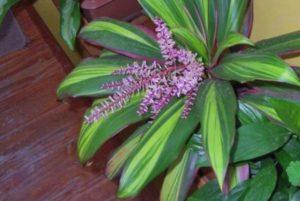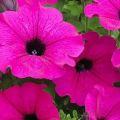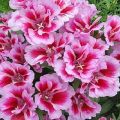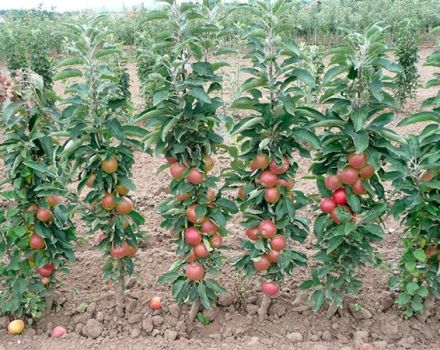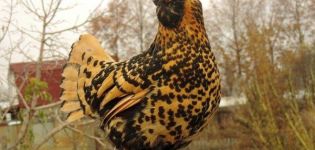Rules for planting and caring for salvia, description of 25 varieties and species
The salvia plant (sage) is widespread in tropical and temperate climates around the world. Some of the varieties are widely used in traditional medicine. The Salvia clan numbers only about nine hundred representatives living in different parts of the world. Medicinal varieties of this plant are usually called sage, and decorative varieties are called salvia.
Description and features
In the genus Salvia there are both annual and perennial representatives. The stems are straight, reaching a height of 1.2 meters. The leaves are most often whole, dark green. The flowers are bright, depending on the variety, they can be red, blue, blue, white, pink.
Growing
Depending on the specific variety, the plant can be grown in a seedling and non-seedling way by cuttings.
Seedling method
Growing by planting seeds is the main method, which is suitable for both annual and perennial varieties.
Timing
It is optimal to first grow seedlings in containers, and then transplant them into the ground. Sowing seeds in a container should be in February or early March.
Soil preparation
This culture needs a light, fertile soil. The acidity of the soil should be in the range of 6-6.5 pH. You can buy a ready-made mixture in a specialty store, or prepare it from peat, sand and garden soil in equal proportions.
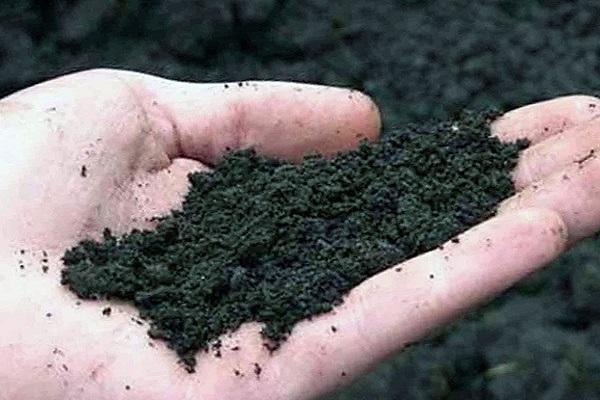
How to plant
The seeds are most often sold as granules. A drainage layer is poured into the seedling pots, and prepared soil is placed on top. The substrate should be moistened and spread evenly on top of the planting material, then sprinkle on top with a two-millimeter layer of earth.
Watering
After planting, the crops must be moistened. Seedlings should be watered regularly, in moderation, avoiding excess moisture.
Picking
Seedlings must be dived so that the roots are strong, and the plant takes root in the soil. After the formation of the first leaves, they are dived and transplanted into a larger container. The second pick should be made two weeks after the first.
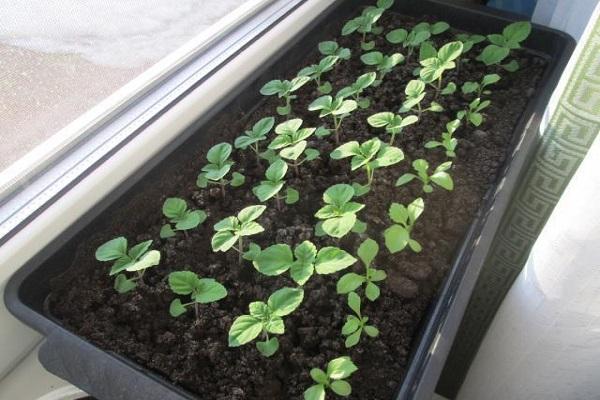
Hardening
In spring, in warm weather, plants are transplanted into open ground. But before that, the seedlings should be hardened.Within two weeks before transplanting, the seedlings in containers are taken out into fresh air, gradually increasing the time the seedlings stay outside.
Seedless
Seedless growing is not suitable for all Salvia varieties. This method is suitable for warm regions. In open ground, salvia seeds are planted in early spring or late autumn. This is due to the long growing season.
Site selection
The landing site should be sunny and protected from gusty winds.
Soil requirements
Light fertile soil is suitable for growing a plant. Water in the soil should not accumulate and stagnate, since an excess of moisture is fraught with rotting of the roots and stems of salvia.
Landing scheme
Ash, superphosphate and organic fertilizer are added to the hole before planting the plant. Plants should be planted 20-30 centimeters apart.
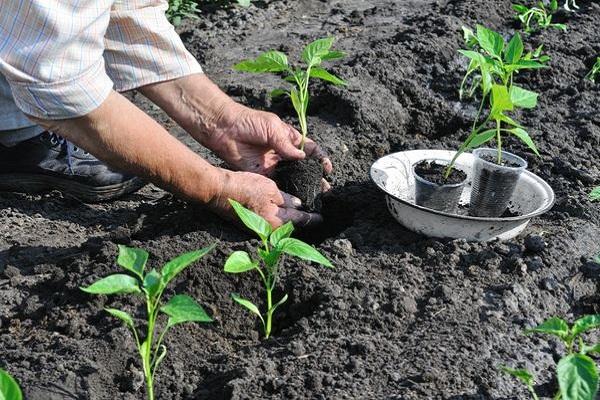
Care
Salvia, like any plant, needs proper care after planting.
Watering
The culture is unpretentious in terms of watering and easily tolerates drying out. However, in the early stages, before the flower stalks appear, the flowers should be watered regularly in dry weather.
Loosening and weeding
Salvia prefers loose soil and cannot withstand stagnant water. Therefore, the soil should be weeded regularly.
Top dressing
At the beginning of cultivation, the soil should be fed with growth stimulants. Complex minerals should be added during the growing season.
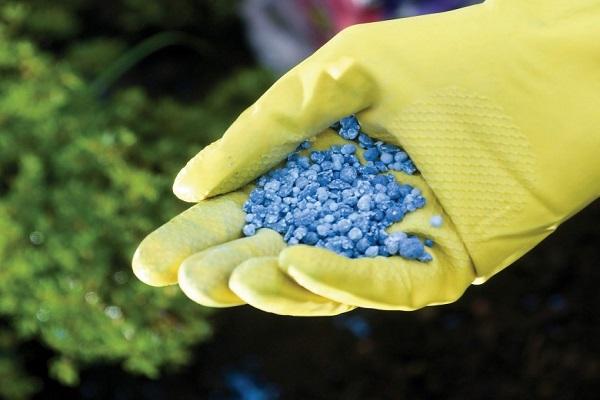
Pruning
To stimulate the growth of shoots, it is necessary to prune in the fall or spring. The plant should be cut in such a way that the branch can take root, as the plant easily and firmly rooted in the soil.
Preparing for winter
Before wintering, the bushes must be carefully trimmed and covered with compost and dry foliage.
Diseases and pests
Salvia is weakly susceptible to disease. Basically, it is damaged by insect pests: mites, slugs, aphids.
Slugs
Salvia foliage is often a target for snails and slugs. Traps made of bark and slate help against them.
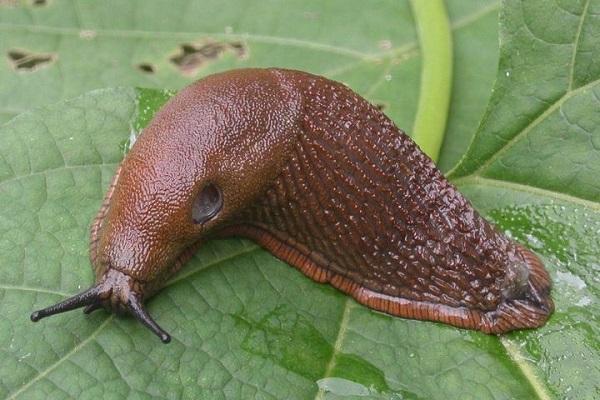
Mites
Acaricides help against sage mites. With a large number of mites on the site, it is worth treating the soil with crushed sulfur.
Whiteflies
Whiteflies often attack vegetable crops, after which they rush to salvia. Therefore, sage should not be grown next to vegetables.
Aphid
To combat aphids, a solution of wood ash in the proportion of one hundred grams of ash per five liters of water helps. Bring the solution to a boil, allow it to cool and add the grated soap, then spray the lower part of the leaves with it.

Kinds
There are many varieties of culture, differing in appearance and properties.
Sparkling
Along with medicinal sage, it is the most common variety. It is appreciated for its bright appearance and unpretentiousness in terms of care and cultivation.
Bright red
An annual variety, it has bright red flowers. Able to reach one and a half meters in height.
Mealy
It has a small height - up to half a meter and blue flowers. A perennial plant, but grown in Russia as an annual.

Whorled
Whorled sage is a perennial plant with a thick brown rhizome and several erect stems. The inflorescence is simple or with a pair of branches, contains up to forty flowers.
Dandelion
It has a straight and poorly branched stem. The leaves are feathery, the inflorescences are whorled, the flowers are light, with a pink tint.
Dubravnaya
The branches reach a length of 1.2 meters. The leaves are large, the flowers are bright red, purple, white or purple.
Sticky
Bushes can reach a height of 90 centimeters. Shoots are straight, glandular. The flowers are pale yellow.
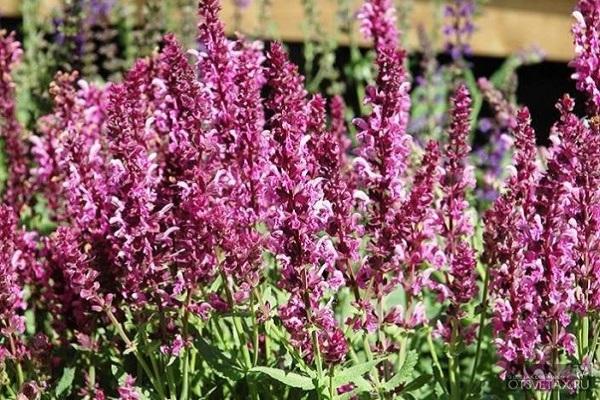
Curvy
Compact variety, up to 60 centimeters high. It has spike-shaped inflorescences, flowers of pink or blue-violet color.
Undersized
It grows in height up to 50 centimeters. It has several different varieties, differing from each other in appearance and flowering rate.
Muscat
Semi-shrub up to 120 centimeters high. The stem is straight, paniculate-branched inflorescences.
Lyre-shaped
Has purple foliage and very compact size - up to 25 centimeters in height.

Popular varieties
Let's take a look at some of the more popular sage varieties.
Purple rain
It is characterized by flowers with a dark purple corolla and purple calyx.
Lady in Red
Low-growing variety up to 40 centimeters high and with red flowers.
Sherri Blossom
The height is the same as that of the Lady in Red, the flowers are pink.
Anschuld
It is characterized by flowers of a delicate whitish-silver color.
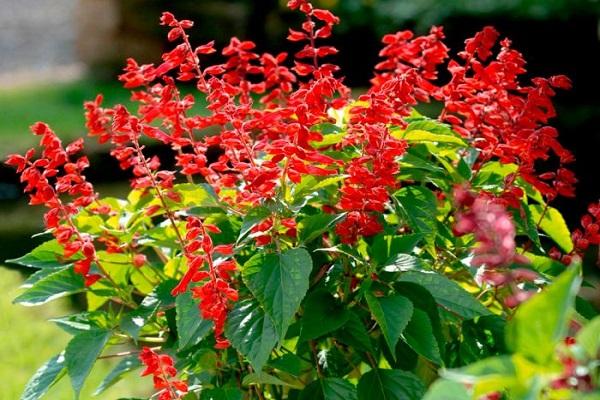
Strata
This variety is a small bush covered with small blue flowers.
Victoria
It has bright blue buds, a pleasant aroma and a long flowering period.
White Swan
White flowers with pink or purple bracts.
Oxford Blue
It grows to a height of 70 centimeters, the flowers are blue-purple.
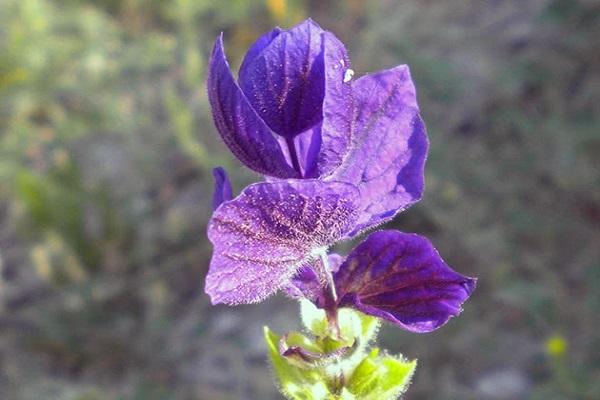
Pink Sandy
Variety with bright pink bracts.
Plumosa
Height - up to 60 centimeters, lilac-purple flowers.
Meinacht
It has blue-violet flowers and a long flowering period, up to 60 centimeters in height.
Amethyst
Medium-sized plant with a large number of shoots, lilac-pink inflorescences.

Snow hill
A small, long-flowering shrub with snow-white flowers.
Rose queen
A perennial hybrid of the oak sage, has a compact size and pink flowers.
Blue queen
Herbaceous perennial with straight stems and bright, blue-violet bracts.
